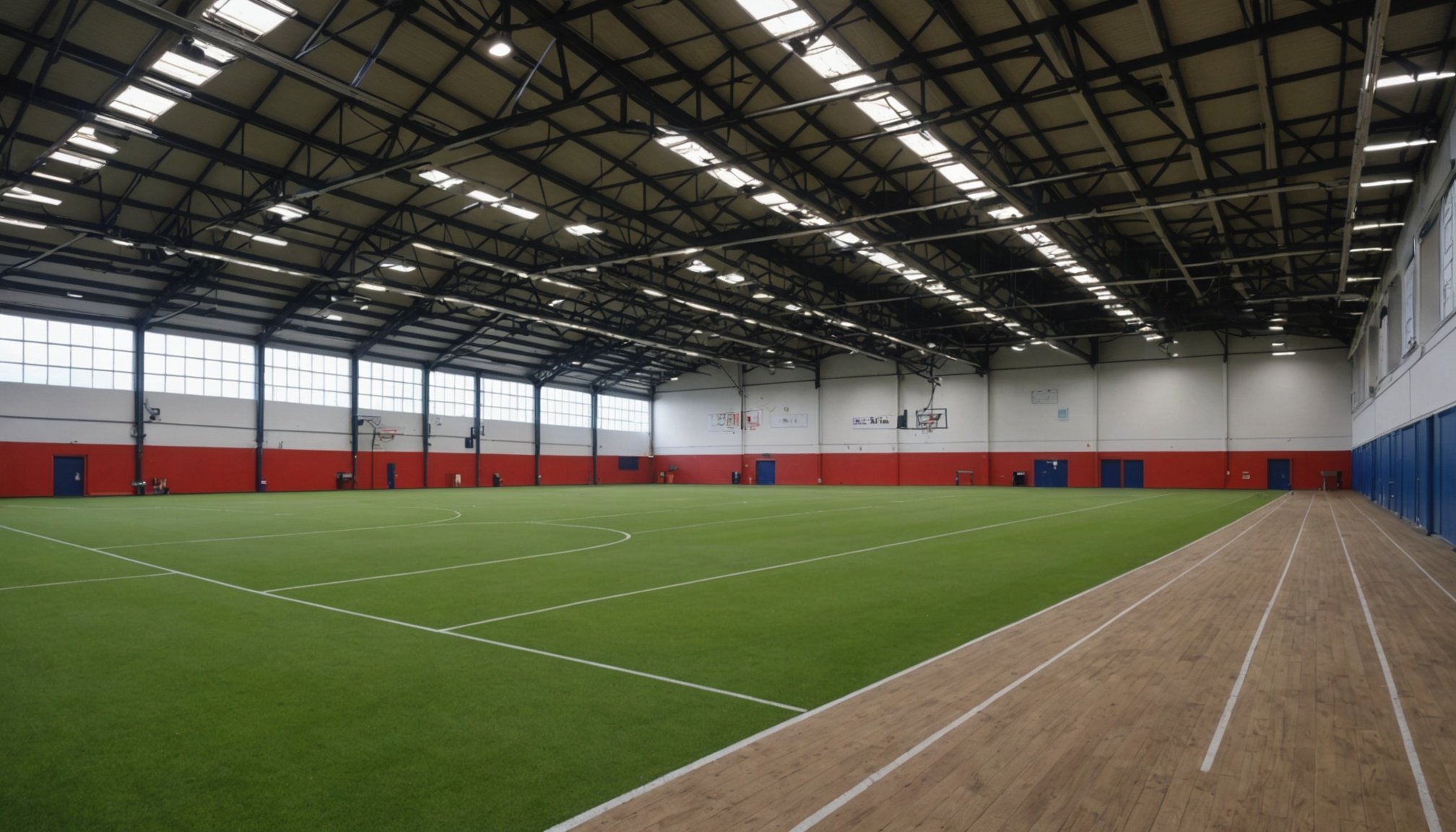Essential Factors UK Sports Facility Managers Must Consider for Venue Upgrades
When it comes to upgrading sports facilities in the UK, facility managers face a multitude of challenges and considerations. From ensuring the venue remains safe and sustainable to enhancing the overall user experience, the process is complex and multifaceted. Here’s a detailed look at the key factors that UK sports facility managers must consider when planning and executing venue upgrades.
Understanding the Need for Upgrades
Before diving into the specifics of venue upgrades, it’s crucial to understand why these upgrades are necessary. Here are a few reasons why facilities might need an overhaul:
Have you seen this : What role do sports psychologists play in the training of elite UK athletes?
Aging Infrastructure
Many sports facilities in the UK were built decades ago and may no longer meet modern standards of safety, efficiency, and user experience. For instance, the St James venue in Guernsey, which has been in operation since the 1980s, is currently facing significant financial and operational challenges that highlight the need for upgrades.
Changing User Needs
The needs of users, whether they are athletes, spectators, or event organisers, are constantly evolving. Facilities must adapt to these changes to remain relevant and attractive. For example, the integration of new technologies and sustainable practices can significantly enhance the user experience and operational efficiency of a venue.
Also to discover : What strategies can UK athletes use to cope with performance anxiety?
Regulatory Compliance
Facilities must comply with various regulations and standards, including those related to health and safety, accessibility, and environmental impact. Non-compliance can result in fines, legal issues, and damage to the facility’s reputation.
Ensuring Health and Safety
Health and safety are paramount when it comes to sports facilities. Here are some key considerations:
Risk Assessments
Conducting thorough risk assessments is essential to identify potential hazards and implement mitigation strategies. This includes assessing the structural integrity of the facility, the condition of equipment, and the adequacy of emergency response plans.
- Identify potential hazards (e.g., structural weaknesses, outdated equipment)
- Assess the likelihood and impact of each hazard
- Implement mitigation strategies (e.g., repairs, replacements, training)
- Regularly review and update risk assessments
Safety Protocols
Developing and enforcing strict safety protocols is critical. This includes having clear emergency response plans, conducting regular safety drills, and ensuring that all staff and users are aware of safety procedures.
- Develop comprehensive emergency response plans
- Conduct regular safety drills and training sessions
- Ensure all staff and users are aware of safety protocols
- Regularly review and update safety protocols
Enhancing the User Experience
The user experience is a key factor in the success of any sports facility. Here are some ways to enhance it:
Modern Amenities
Installing modern amenities such as state-of-the-art lighting, advanced sound systems, and comfortable seating can significantly improve the user experience.
- Upgrade lighting systems to energy-efficient options (e.g., LED lighting)
- Install advanced sound systems for better acoustics
- Replace old seating with comfortable, ergonomic options
- Add amenities like Wi-Fi, charging stations, and interactive displays
Sustainable Practices
Incorporating sustainable practices not only reduces the facility’s environmental impact but also enhances the user experience by creating a more comfortable and healthy environment.
- Implement energy-efficient solutions (e.g., renewable energy sources, energy-saving technologies)
- Use sustainable materials in construction and maintenance
- Reduce water usage through efficient systems and practices
- Promote recycling and reduce waste
For example, the Denny Sanford PREMIER Center in the United States has implemented several sustainable practices, including the use of water bottle filling stations, LED lighting efficiencies, and compostable plastic cups, which can serve as a model for UK facilities.
Managing Events and Operations
Effective event management and operational planning are crucial for the smooth functioning of sports facilities.
Event Planning
Event planning involves a range of activities from venue selection to coordination with suppliers. Here are some key considerations:
- Select a venue that meets the event's specific needs
- Coordinate with suppliers and stakeholders
- Manage budgets and ensure financial sustainability
- Plan for crowd management, health and safety, and logistical operations
For instance, managing a large-scale event like a festival requires meticulous planning, including crowd management, health and safety considerations, and logistical planning.
Traffic Management
Ensuring smooth traffic flow is essential for both participants and spectators. This includes planning for public transport, parking, and pedestrian access.
- Plan for public transport options and schedules
- Ensure adequate parking facilities
- Manage pedestrian access and flow
- Coordinate with local authorities for traffic management
Financial and Socioeconomic Considerations
Upgrading sports facilities involves significant financial investment, but it can also have long-term socioeconomic benefits.
Revenue Generation
Facilities can generate revenue through various means, including ticket sales, sponsorships, and hospitality services.
| Revenue Stream | Description |
|---|---|
| Ticket Sales | Revenue generated from event ticket sales |
| Sponsorships | Revenue from partnerships with sponsors |
| Hospitality Services | Revenue from food, beverage, and other hospitality services |
| Merchandise Sales | Revenue from the sale of event-related merchandise |
| Advertising | Revenue from advertising within the facility |
For example, Mott MacDonald emphasizes the importance of maximizing long-term revenue-generating opportunities to promote a successful sporting and cultural legacy.
Urban Regeneration
Sports facilities can play a significant role in urban regeneration by improving the local economy and enhancing community life.
- Inject investment into the local area
- Strengthen tourism and local identity
- Improve lives and livelihoods through job creation and community engagement
Environmental Impact
The environmental impact of sports facilities is a critical consideration in today’s world.
Carbon Footprint
Reducing the carbon footprint of a facility involves several strategies:
- Use renewable energy sources (e.g., solar, wind)
- Implement energy-efficient technologies
- Reduce water usage and waste
- Promote sustainable transportation options
Sustainable Practices
Incorporating sustainable practices into facility operations can have a significant positive impact on the environment.
- Use sustainable materials in construction and maintenance
- Implement recycling programs
- Reduce single-use plastics
- Promote environmental awareness among users
For instance, the Denny Sanford PREMIER Center’s commitment to sustainability includes LEED certification, water bottle filling stations, and compostable plastic cups, which are excellent examples of sustainable practices in action.
Community Engagement and Public Support
Engaging with the local community and ensuring public support are vital for the success of any sports facility upgrade.
Community Initiatives
Facilities can engage with the community through various initiatives:
- Support local nonprofit organizations
- Participate in community service initiatives
- Encourage volunteer work among staff
- Offer fundraising opportunities to local organizations
For example, the Denny Sanford PREMIER Center supports over 70 local nonprofit organizations annually and participates in various community service initiatives.
Public Consultation
Public consultation is essential to ensure that the facility meets the needs and expectations of the local community.
- Conduct public surveys and feedback sessions
- Engage with local stakeholders and community groups
- Ensure transparency in the upgrade process
- Address public concerns and suggestions
Upgrading sports facilities in the UK is a complex process that requires careful consideration of multiple factors. From ensuring health and safety to enhancing the user experience, managing events and operations, and considering financial and socioeconomic impacts, facility managers must take a holistic approach. By incorporating sustainable practices, engaging with the community, and ensuring public support, facilities can not only remain operational but also thrive in the long term.
As Jon Bisson, the director of St James in Guernsey, emphasized, “It’s uplifting, it’s heartwarming, and it’s absolutely critical for our wellbeing” to have venues like St James, which underscores the importance of preserving and upgrading these essential community resources.
By following these guidelines and considering the various factors outlined, UK sports facility managers can ensure that their venues remain vibrant, sustainable, and beneficial to both the users and the wider community.











